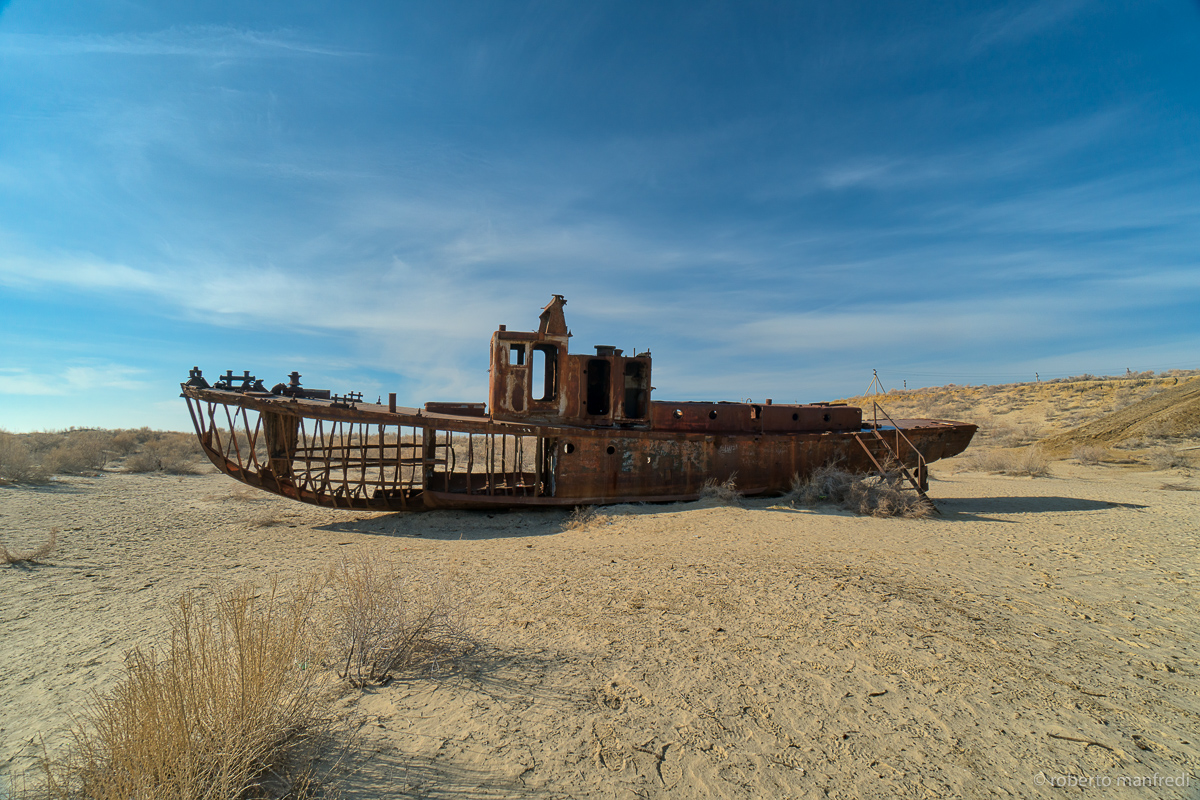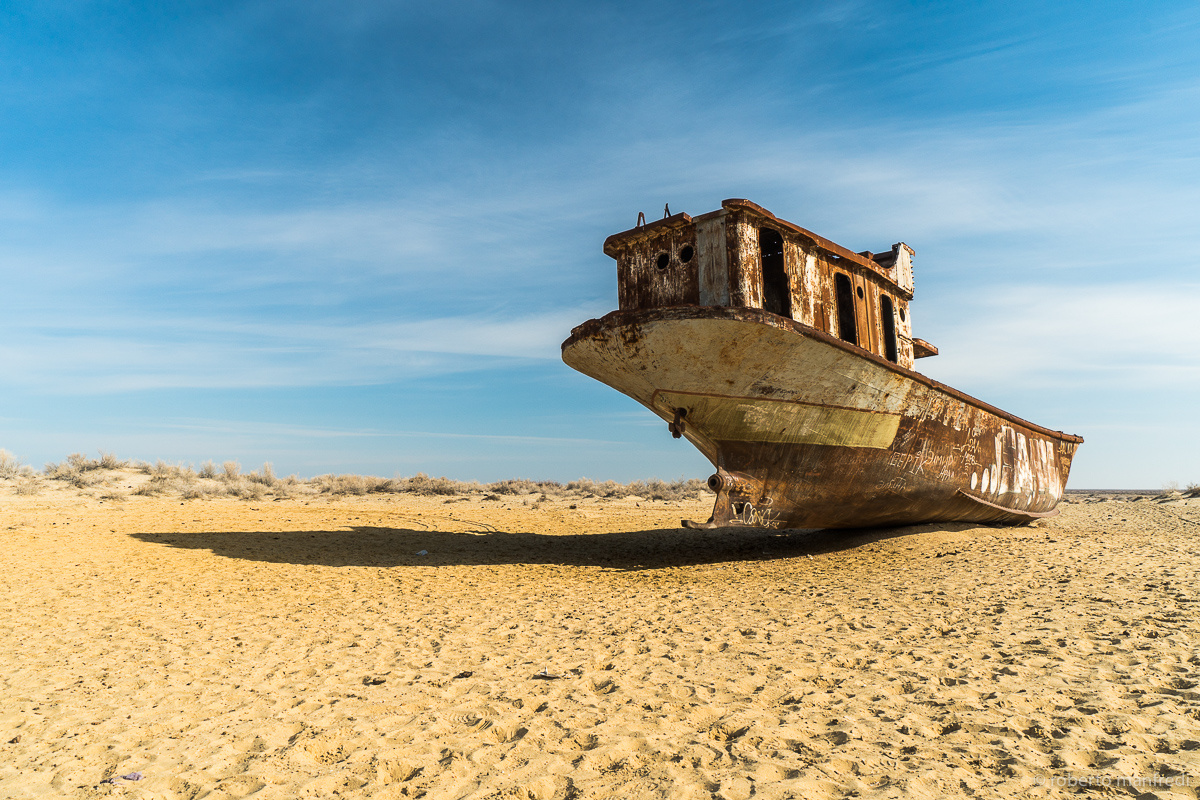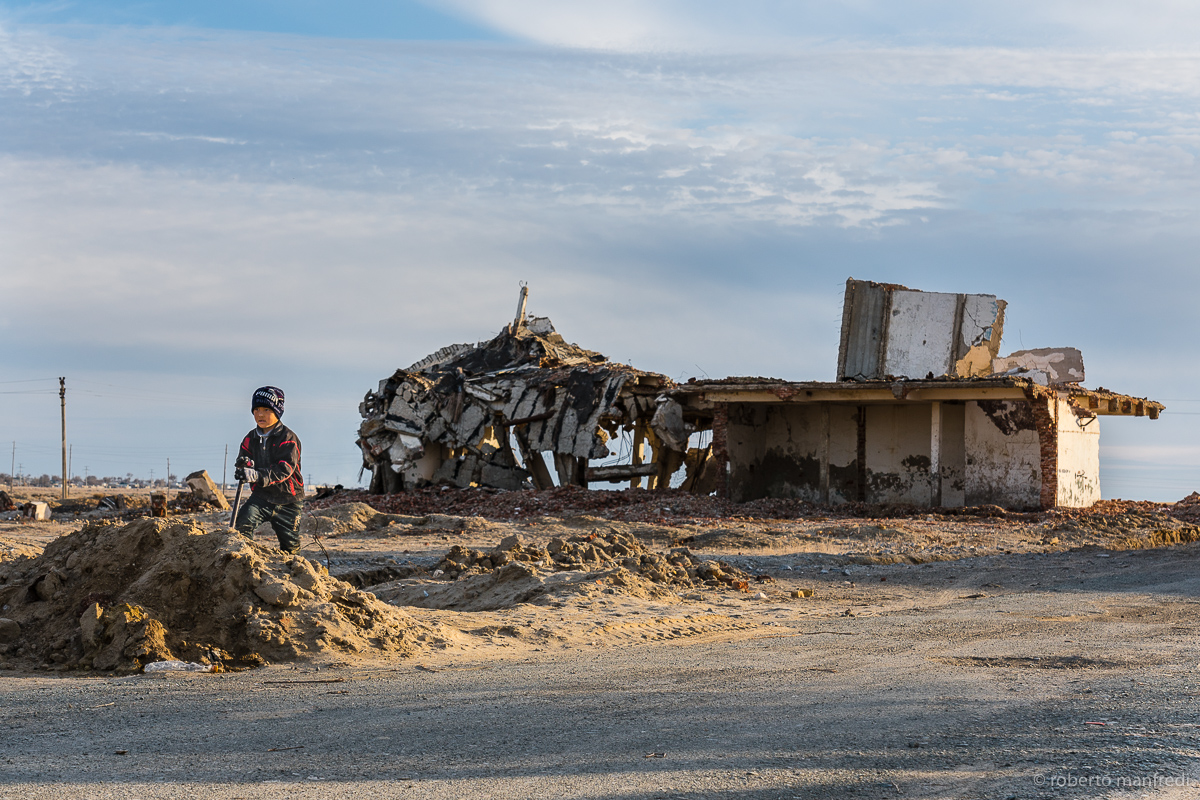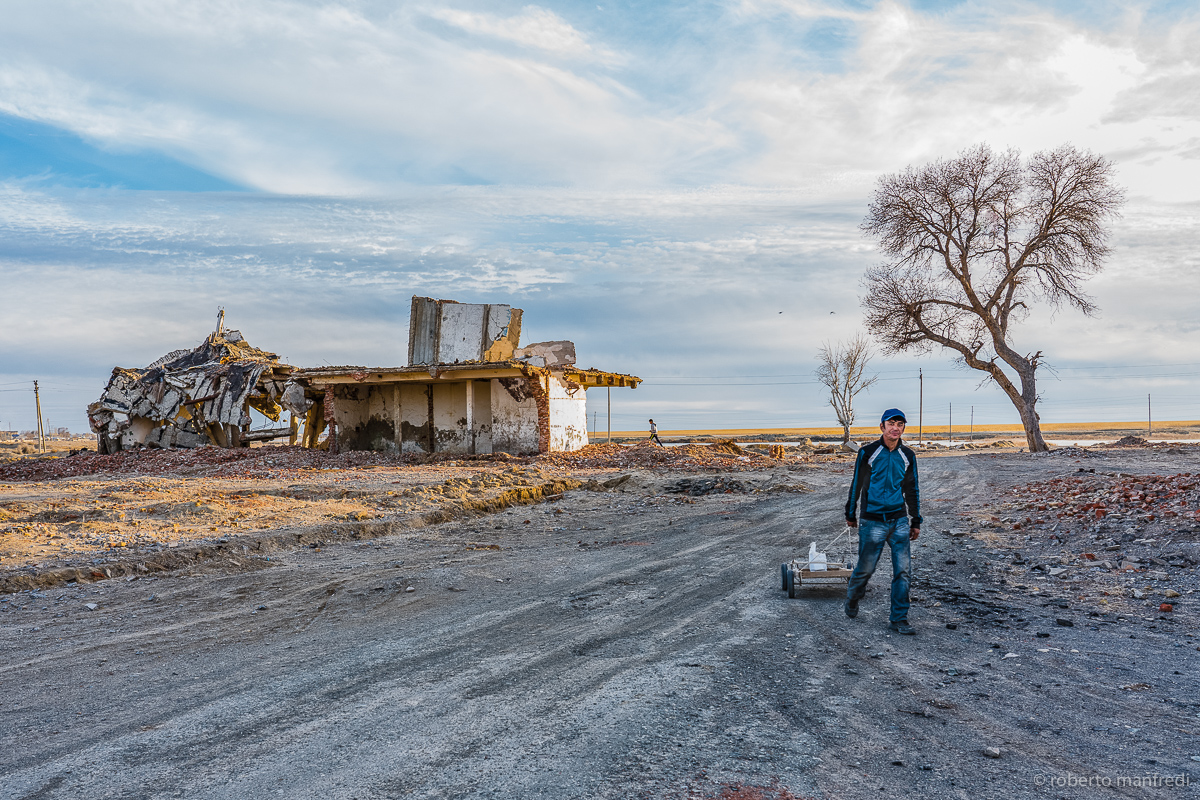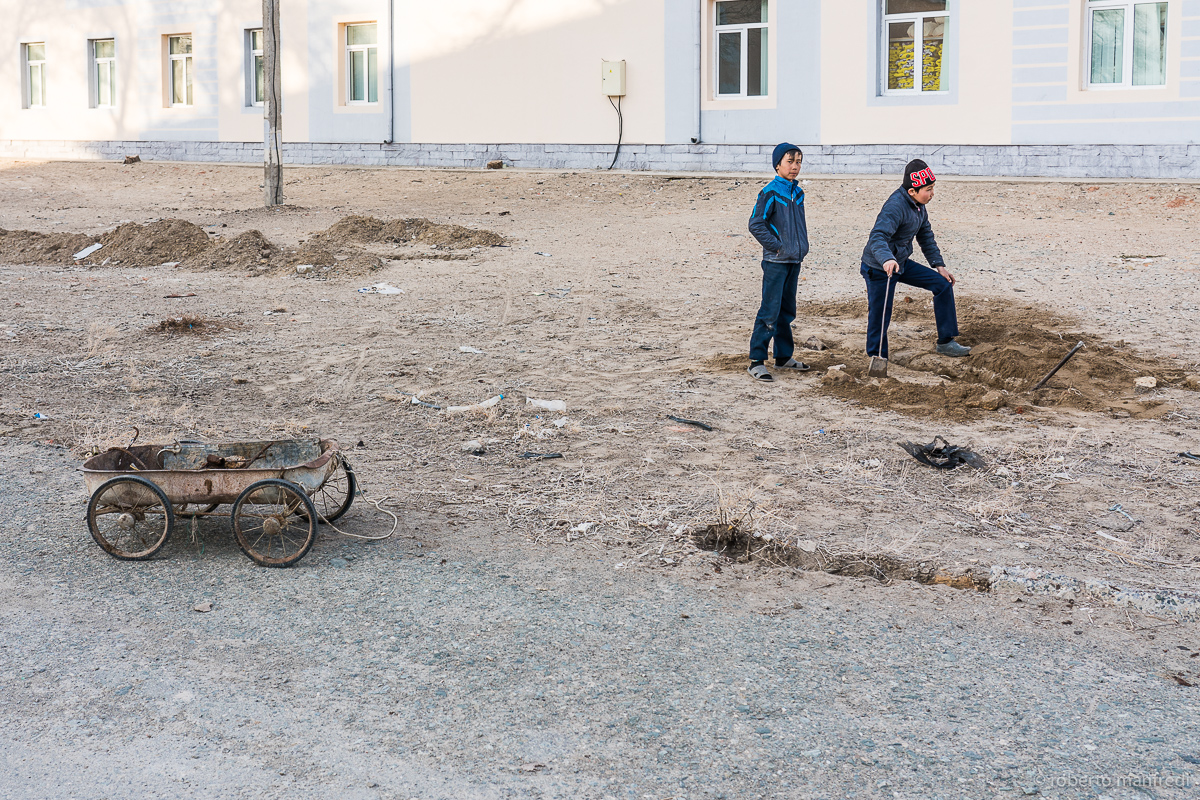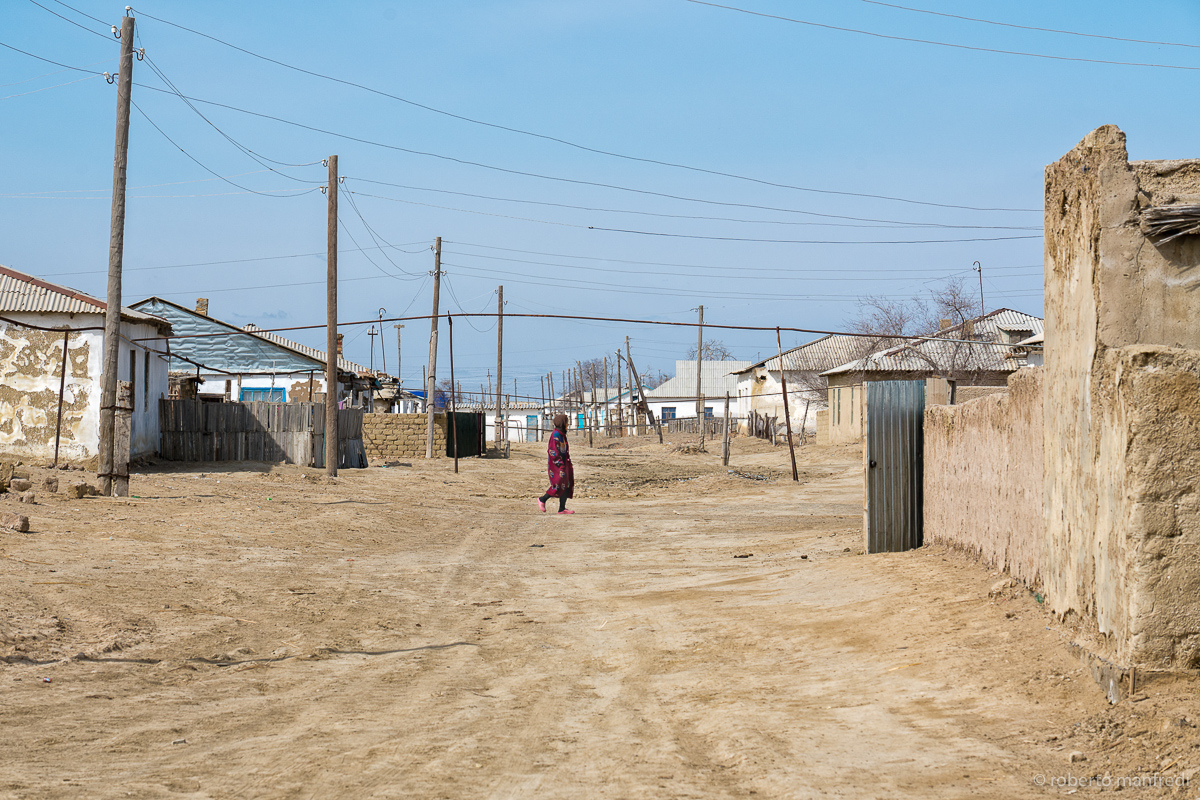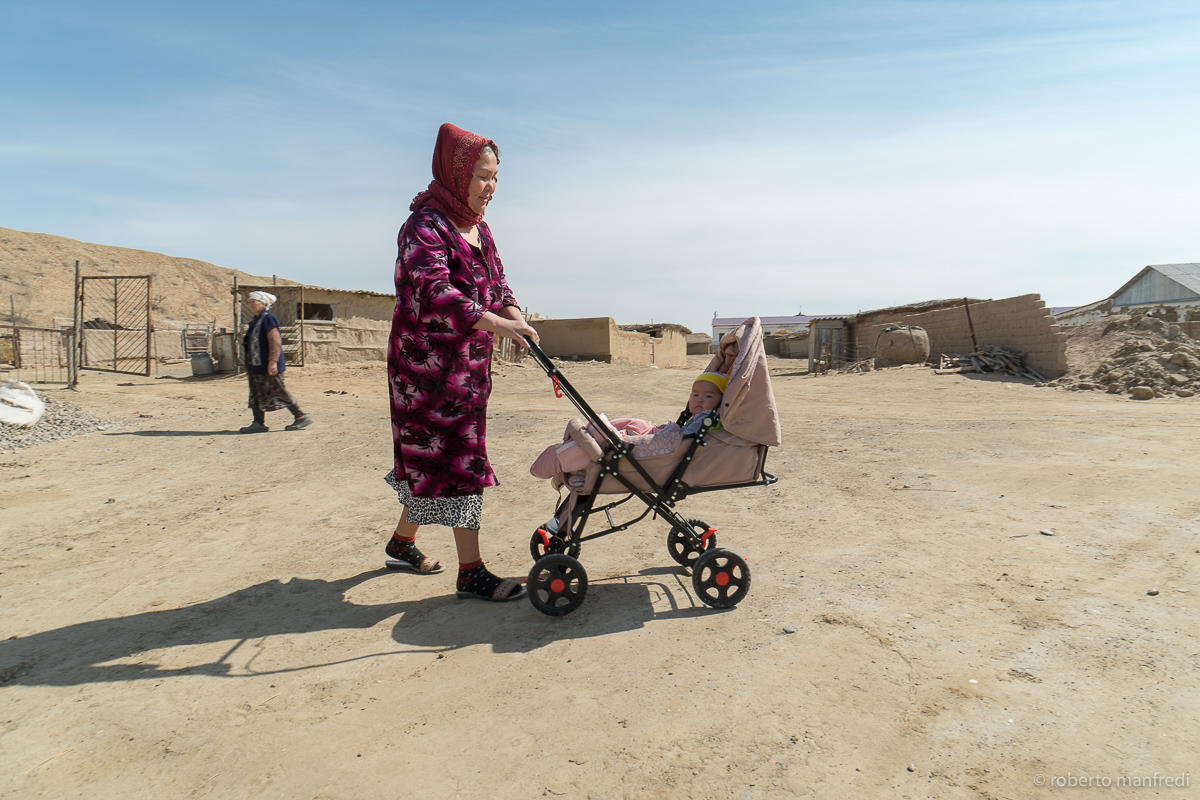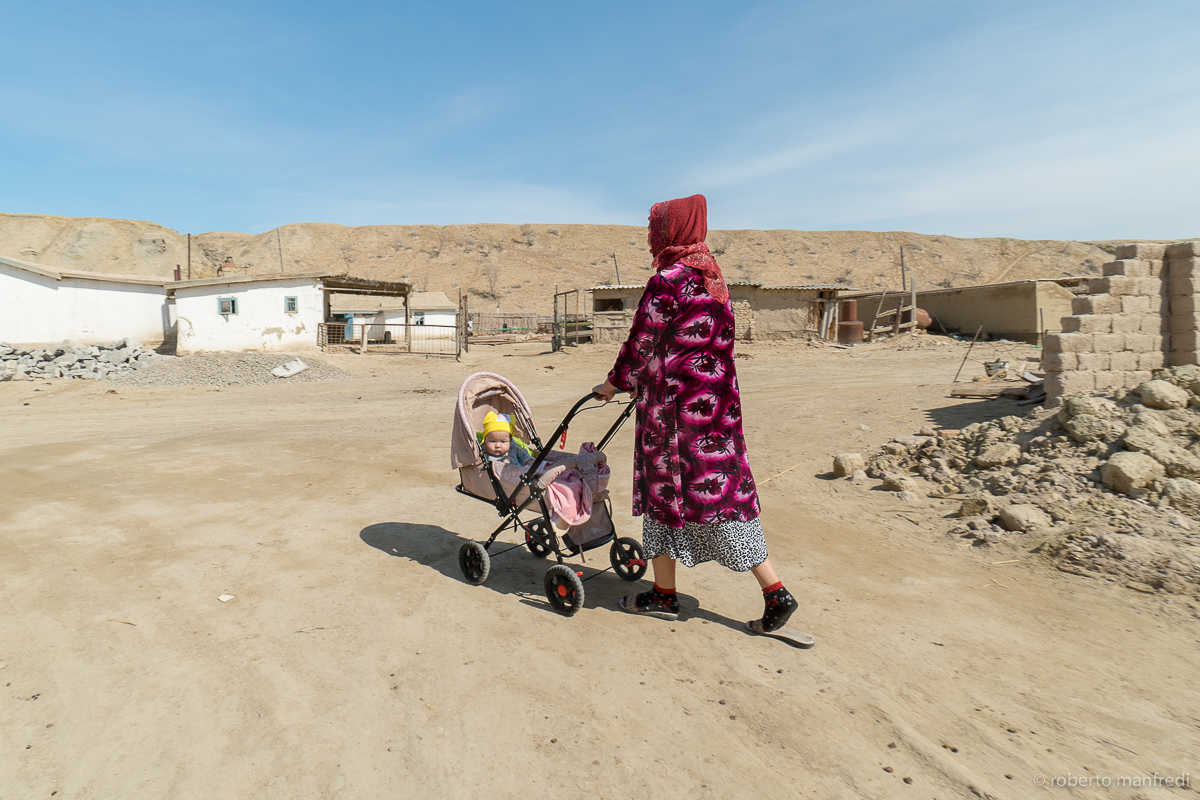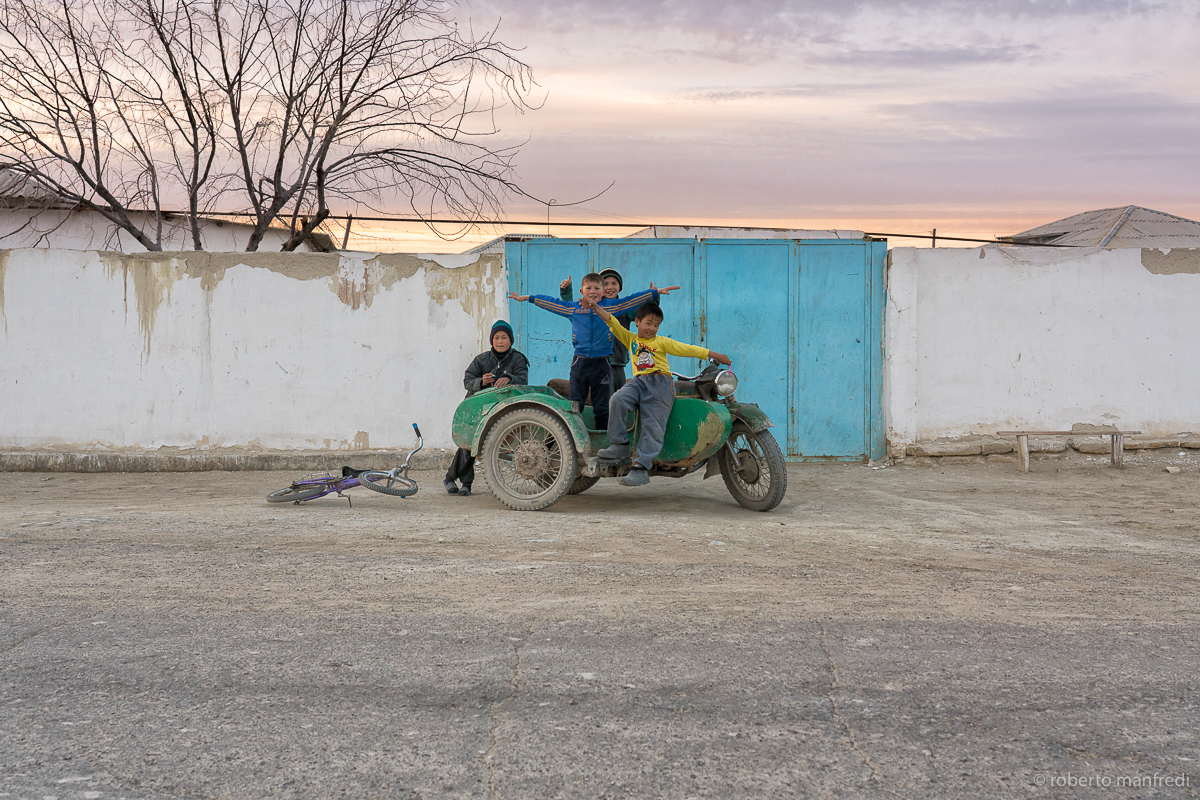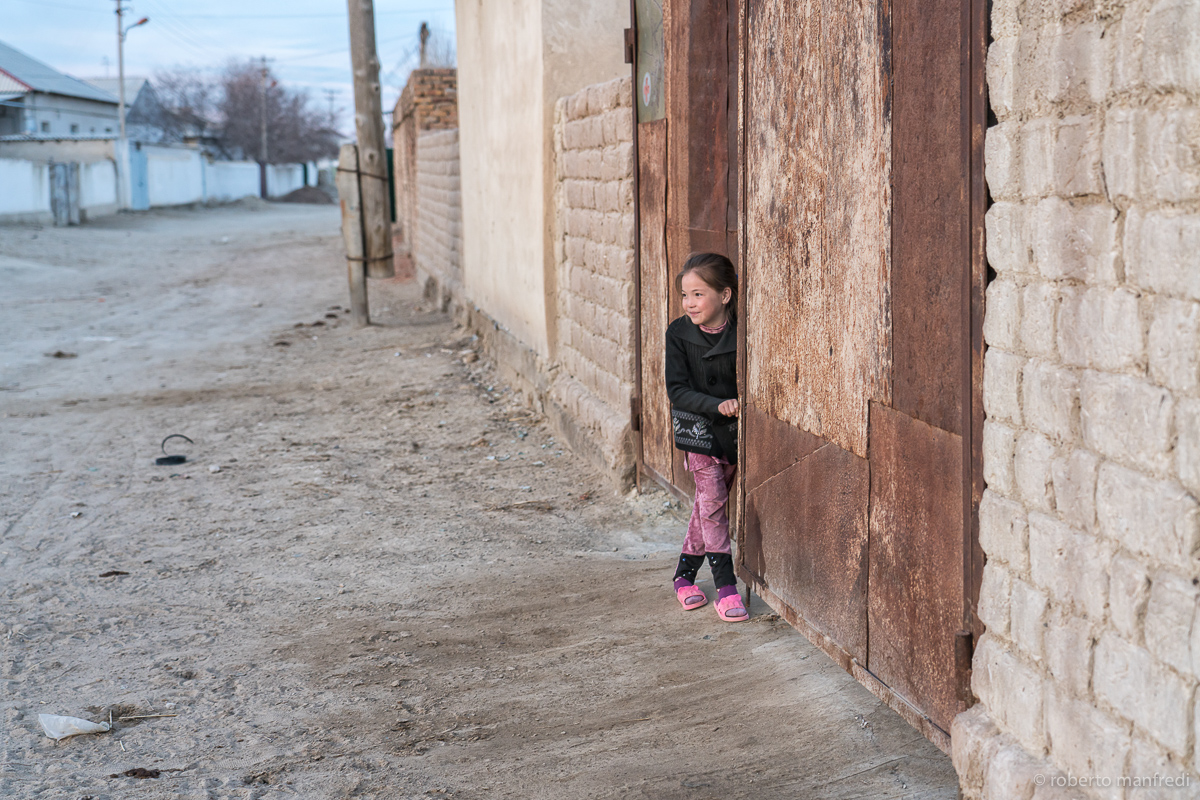Once upon a time there was the sea
Place: Autonomous Republic of Karakalpakstan, Uzbekistan
The drying up of the Aral Sea has been defined as the most serious environmental disaster caused by the human species in all of history; even more serious because it was widely anticipated and yet knowingly pursued. Yet in Europe it is almost unknown and nobody talks about it.
Moynak, in the westernmost part of Uzbekistan, was a charming town on the shores of the Aral Sea. Today the dying Aral Sea has retreated hundreds of kilometers away.
Aral was one of the largest lakes in the world, and due to its dimension (about 300 kilometers in diameter) it had earned the title of sea
Its waters were abundant with fish and Moynak people lived off fishing and processing the fish, which was canned on the spot in a factory that supplied the entire Soviet Union, of which Uzbekistan was then part.
But in the last century, the five-year plans for the economic development of the USSR decreed a crazy idea: to draw ever greater quantities of water from the waters of the Aral's main tributary, in order to irrigate ever larger crops, especially cotton.
This choice would have resulted in the death of the Aral: it was known from public domain studies, but it was a price that the USSR was willing to pay in order to bet on the cultivation of cotton.
The retreat of the waters began in 1960, slowly at first, and from 1980 it became faster and faster; since then the Aral has lost over 90% of its extent.
In the beginning, the survival of Moynak and its inhabitants was guaranteed by supplying the fish factory with fish from the Baltic Sea, which was transported to Uzbekistan from thousands kilometers away.
Today this city and the surrounding area have fallen into misery, the standard of living here is significantly lower than that, more than decent, in the rest of Uzbekistan. The city has not running water and sewers, the fish factoryis ruined and among its rubble men and children roam in search of some rusty iron pieces to resell for a few pennies; on the dried-up bottom of the Aral Sea, which has now become a desert, there is a rusty fleet of abandoned fishing boats. From above you can still see what were the coasts of one of the largest lakes in the world and imagine the water that filled it. The amount of water that has been removed is breathtaking, and now it takes several hours of off-roading on a muddy surface to reach the water.
The whole area is severely polluted, the soil is salty and contaminated both by fertilizers and pesticides and by the toxic waste of an abandoned military base, located on what used to be an Aral island, where were conducted experiments of chemical and biological weapons and where are still stored barrels containing anthrax bacteria and other pathogens.
What will the future of these children be?






